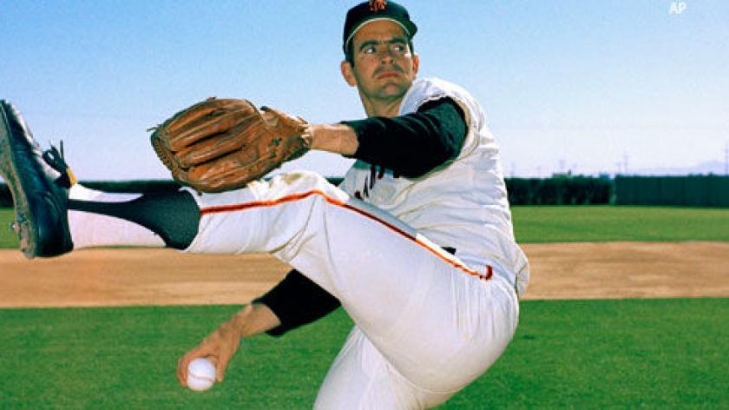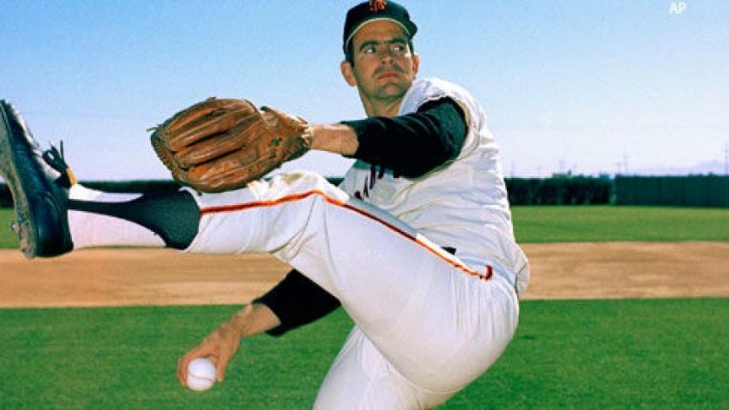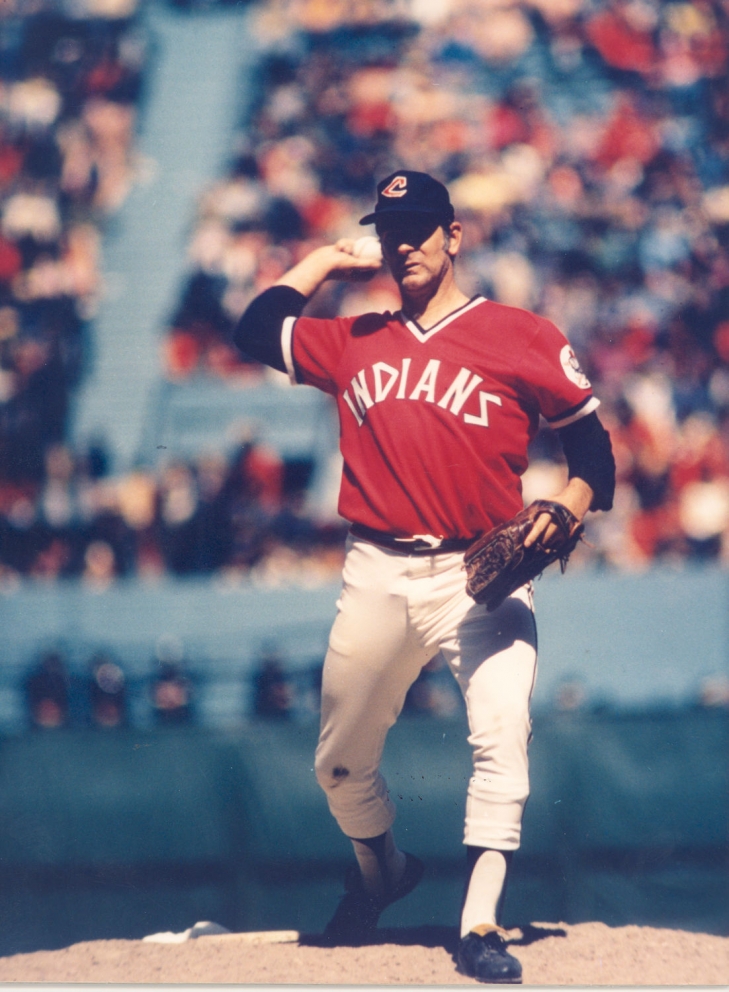25. Gaylord Perry
Gaylord Perry spent more time with the San Francisco Giants (ten years) than he did with any other team, but the Cooperstown resident is not one of the first Pitchers you think of when the story of the Giants is discussed. Perhaps, that is because he won his two Cy Young Awards elsewhere (Cleveland and San Diego), but it was in SF where he became a star.
The spitball master did not learn that trick pitch right away. He first debuted for San Francisco in 1962, mostly coming in from the bullpen, and he did not stick in the Majors until 1964, the same year he adopted the spitter.
Perry had his break-out year in 1966, finishing 21-8 with an ERA of 2.99. He went to his first All-Star Game and fanned 201 batters, the first of four times he struck out at least 200. Now the ace of the staff (or at least at the top of the rotation), Perry kept compiling good numbers, keeping his ERA under three for the most part, while also leading the NL twice in Innings Pitched (1969 & 1970). His best season as a Giant was in 1970 when he was again an All-Star and led the NL in Wins (23). Perry was second in Cy Young voting that year.
Perry was an outstanding hurler, but the Giants thought that at age 33, his best years were behind him. He was traded to Cleveland and promptly proved that San Francisco was wrong, and it remains one of the worst trades in franchise history.
Perry had 1606 Strikeouts with a 134-109 Record with the Giants, and he entered the Baseball Hall of Fame in 1991. San Francisco retired his number 36 in 2005, and three years later, he was part of the monstrous first class of their Wall of Fame.
RIP: Gaylord Perry
It has been rough week for us at Notinhalloffame.com, as following the deaths of John Had and Christine McVie, Baseball Hall of Fame Pitcher, Gaylord Perry, passed away at the age of 84.
The master of the spitball used cunning and guile to last 22 Seasons in the Majors, playing for San Francisco, Cleveland, Texas, San Diego, New York (AL), Atlanta, Seattle and Kansas City. Debuting for the Giants in 1962, Perry did not learn the spitter until two years later, and while it was widely known he used the illegal pitch, he was not caught until 1981. Batters were flummoxed by Perry before they got into the box, feeling that they were at a disadvantage whether Perry used that trick or not.
A Giant for the first ten years of his career, Perry bounced around afterward, but it was outside of the Bay Area where he had his Cy Youngs. The first was in 1972 with Cleveland, his first year in the American League. He would make history as the first Cy Young winner in both leagues, when he won his second award with the Padres in 1979, which he won just before he turned 40.
Perry played until 1983, retiring with a 314-265 record and 3,534 Strikeouts. He entered the Hall of Fame in 1991, on his third year on the ballot. Perry is also a member of the San Francisco Giants Wall of Fame and Cleveland Guardians Hall of Fame.
We here at Notinhalloffame.com would like to extend our condolences to the fans, friends and family of Gaylord Perry.
Our All-Time Top 50 Cleveland Indians are now up
Yes, we know that this is taking a while!
As many of you know, we here at Notinhalloffame.com are slowly generating the 50 of each major North American sports team. We have a new one to unveil today, that of the Cleveland Indians.
The origin of the Cleveland Indians begins in Grand Rapids, Michigan, in 1894, where they played in the Western League. The franchise relocated in 1900, becoming the Cleveland Lake Shores, and eventually were an inaugural team of the American League, going through multiple name changes (Bluebirds, Broncos, Naps) before becoming the Indians for over a decade.
Cleveland would become a great sports town, but the baseball team has not given them very much to cheer for over the years. The Indians have only won the World Series twice (1920 and 1948), with three other appearances.
The team has announced that they will soon drop the Indians nickname, though as of this writing, it is not sure what they will change it to and when precisely it will take place.
Our Top 50 lists in baseball look at the following:
1. Advanced Statistics.
2. Traditional statistics and how they finished in the American League.
3. Playoff accomplishments.
4. Their overall impact on the team and other intangibles not reflected in a stat sheet.
Remember, this is ONLY based on what a player does on that particular team and not what he accomplished elsewhere and also note that we have placed an increased importance on the first two categories.
This list is updated up until the end of the 2019 Season.
The complete list can be found here, but as always, we announce our top five in this article. They are:
1. Bob Feller
2. Nap Lajoie
3. Tris Speaker
4. Lou Boudreau
We will continue our adjustments on our existing lists and will continue developing our new lists.
Look for our more material coming soon!
As always, we thank you for your support.
33. Gaylord Perry
Gaylord Perry entered the Baseball Hall of Fame in 1991, after a 22-year career. He only spent three-a-half seasons with Cleveland, but arguably it was the best period of his life.
Gaylord Perry supports Bonds, slams Rose
It has felt that for years that existing Baseball Hall of Famers have been constantly stating that PED users have no place in Cooperstown. As such, it took us by surprise when Hall of Fame Pitcher, Gaylord Perry said today that he thought Barry Bonds deserves to be inducted.
It took place in a conference call from Diamond Resorts, and while it was not exactly a glowing endorsement, it was considering that it came from a Hall of Famer over the age of 60:
“I think he’ll get in eventually. If you have a player like that, pretty soon, you put him in.’’
While this is not exactly a ringing endorsement, compared to his Hall of Fame peers it really is!
Perry may have had a somewhat lackadaisical endorsement of Barry Bonds, he had an adamant stance against Pete Rose:
“Pete did the worst thing possible, worse than steroids,…he put money on games, win or lose. He’s paying the price.”
Quite the different stance regarding Rose isn’t it?
Gaylord Perry was not the only Baseball Hall of Fame inductee who was on this conference call. John Smoltz was also on this call and he had a softer stance in regards to Bonds:
“I’m trying to figure out what is actual, and what isn’t, To me, the one thing forgotten in this thing is the mission statement. Character is a big part of it. You have to not only have the numbers, but the character that matches it
If you have first-hand knowledge that a player used, or has publicly acknowledged it, I think it’s an easy decision. When it is circumstance and evidence, and you don’t know, and just follow the rumor mill, that’s difficult for the writer to be judge and jury.”
This is not exactly an endorsement for Bonds, but it is not a condemnation either.
As it stands now, Bonds and his “PED brethren” are on the outside looking in, but from revealed ballots it looks like he and his ilk are inching closer to the 75% needed to get in. As some writers have put it, the fact Bud Selig has been chosen by the Today’s Game Committee, it is harder to omit the players who juiced up under his watch.
The Baseball Hall of Fame will announce their Class of 2017 on the 17th of January.
This could be the most interesting vote yet!







